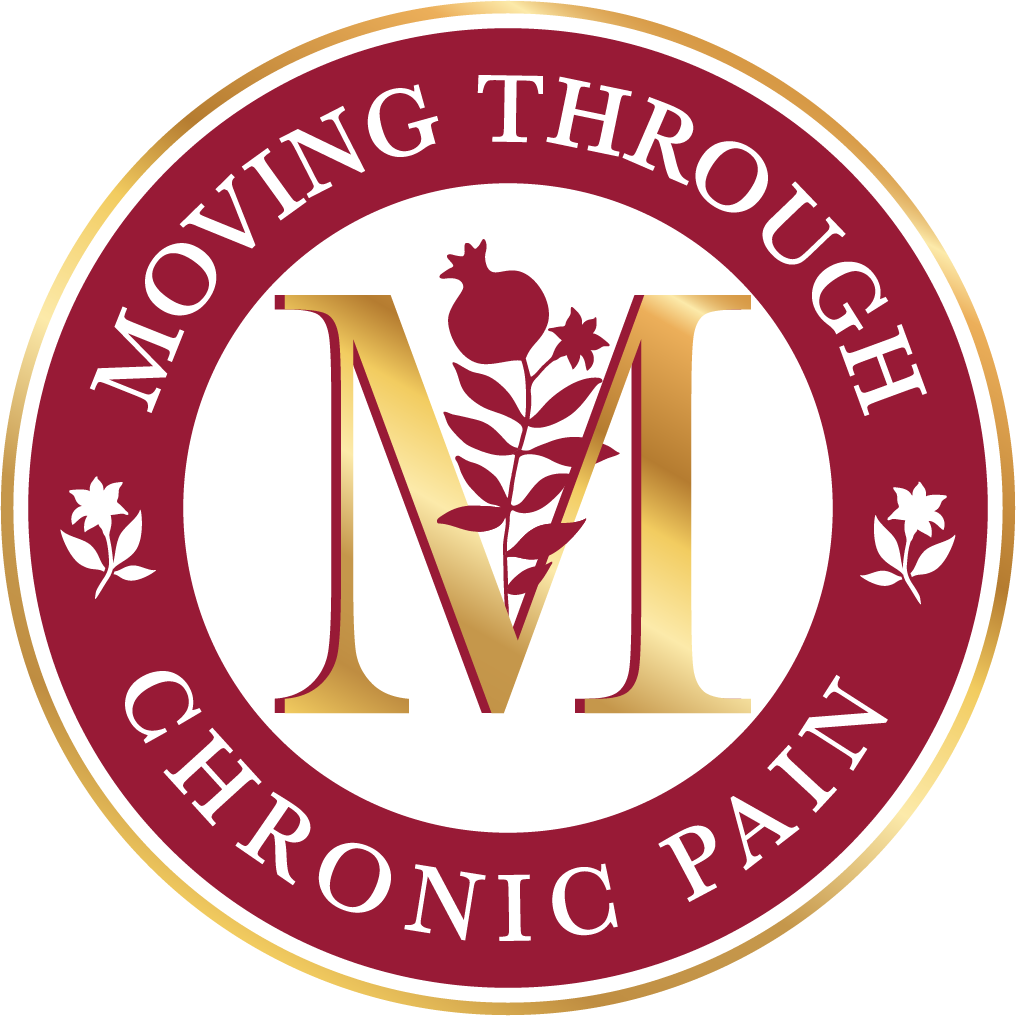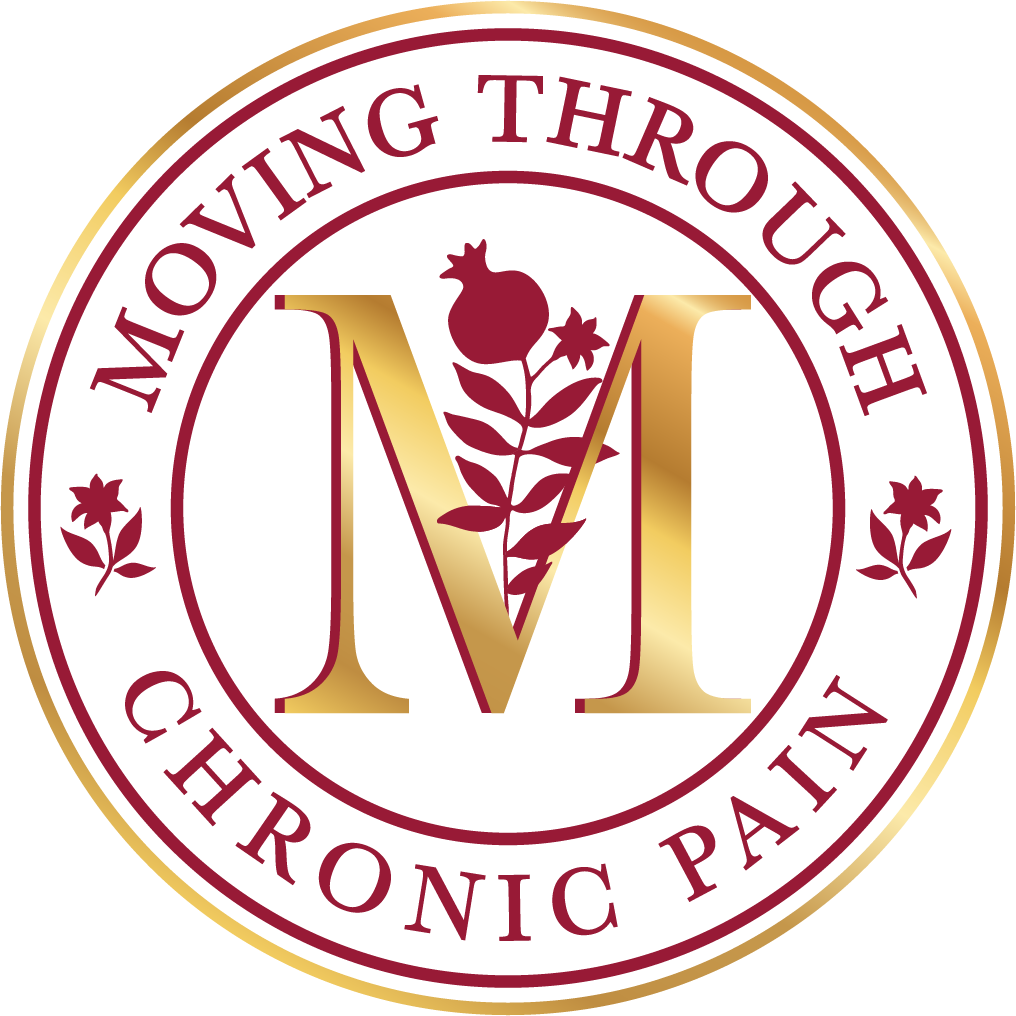HELPING MAKE YOUR CHRONIC PAIN JOURNEY EASIER
The pain cHronic•les
LATEST BLOG ARTICLES

Chronic pain is a complex and often misunderstood condition that affects millions of people around the world. It's important to note that every individual's experience with chronic pain can be unique, and what works for one person may not necessarily work for another. I’ll will be providing some insights into the causes, mechanisms, and challenges of chronic pain based on my personal experience in the hopes that it will help make your chronic pain journey easier.

Michelle Marikos, Founder & CEO
Moving Through Chronic Pain

VEMA
HELPING MAKE YOUR CHRONIC PAIN JOURNEY EASIER
The Power of the VEMA Model


Bridging the Gap in Chronic Pain Management
Navigating my chronic pain journey for over 20 years has been complex – a whirlwind of highs and lows, filled with intense emotions, setbacks, breakthroughs, and moments of profound enlightenment. Looking back, I think I can safely say I've tried nearly every tool, technique, and tip available. Some have been life-changing, transforming the way I manage my pain. Others have served me well for a while before I moved on to something else, and some have been completely ineffective (I won't sugarcoat it). One crucial lesson I've learned is that what works for one person doesn't always work for another. Our pain is unique, manifesting in different forms and at different times.
This variability often leaves our loved ones, friends, colleagues, and even healthcare providers at a loss for how to best support and advise us. Among all the methods I've tried, one tool stands out as a reliable constant: the VEMA model.
As both a person living with chronic pain and a pain support specialist, I've found the VEMA model invaluable. It’s not just effective in helping patients understand how their providers should communicate with them; it also gives healthcare providers a clear structure to follow during their consultations. This model simplifies the often difficult conversations around pain management, tapering medications, and other sensitive topics.
In essence, the VEMA model is a win-win for both patients and providers. Let’s delve into how it works and why it’s so effective in the context of chronic pain.
What is the VEMA model?
The VEMA model is a structured approach designed to facilitate clear and empathetic communication between patients and healthcare providers. Here's how it breaks down:
Validate: the first step involves acknowledging the patient's pain and feelings. Validation is crucial because it builds trust and shows the patient that their pain is being taken seriously. People need to feel validated about their experience. Until they do, they won’t be able to move forward in the process of accepting change or receiving new information. The patient’s experience can be validated by reflecting emotional response. Providers do not have to agree with the patient’s perception, but they do need to validate their pain experience and recognize that the patient’s pain is real.
Educate: the second step is about providing the patient with information about their condition and the possible treatments. Education empowers patients, helping them understand their pain and the rationale behind different management strategies. Patients with chronic conditions such as pain should have realistic expectations about improvement. In addition, these expectations should be discussed in terms of best-practice guidelines which include risk/benefit of specific treatments.
Motivate: this step involves collaboratively developing a pain management plan tailored to the patient’s unique needs. It includes setting realistic goals and discussing various treatment options. Healthcare providers can motivate patients by highlighting the benefits of sticking to treatment plans and providing consistent support. As chronic pain often intertwines with mental health issues like depression and anxiety, addressing these factors through motivation can improve overall treatment outcomes.
Activate: the final step is ongoing assessment and adjustment of the management plan as needed. Regular follow-ups ensure that the plan remains effective and can be tweaked in response to changes in the patient's condition. Providers are encouraged to work together with the patient to set goals and actively create opportunities for the patient to take control of establishing their own action plan. This kind of active involvement in action planning will increase the likelihood of engagement and action-taking.
For best effect, it should always be followed in the V-E-M-A succession; the four steps cannot work in isolation, they follow on logically to reflect the constant process; it’s not a one-off model either. We need to come back to VEMA time and again.The VEMA model is a structured approach designed to facilitate clear and empathetic communication between patients and healthcare providers.
Why the VEMA Model Works
I believe that the VEMA model excels in chronic pain management for several reasons:
Structured communication: it provides a clear framework for conversations, ensuring that important aspects of pain management are covered systematically.
Patient-centered care: by focusing on validation and education, it prioritizes the patient’s experience and knowledge, fostering a sense of partnership and collaboration.
Flexibility: the model is adaptable, allowing for modifications based on the patient’s feedback and evolving needs.
Empowerment: it empowers patients by involving them in their care, making them active participants rather than passive recipients.
Real-Life Impact
In my personal experience, the VEMA model has transformed the interactions I have with my healthcare providers. Conversations that used to be frustrating and fragmented became more coherent and productive. The model also served as a guide for me as a pain support specialist, helping me offer better advice and support to others.
If you're navigating chronic pain, I encourage you to discuss the VEMA model with your healthcare provider. It might just be the key to unlocking more effective and empathetic care.
The VEMA model can be applied to many aspects of living with chronic pain, and it's especially powerful in 'undoing' the trauma of conversations that have left you feeling invisible, lost, or hopeless – feelings I’m sure many of us have experienced. If you're like me, you've probably had times when you left a doctor's office without all the information you needed about your condition or treatment. This lack of information can have serious consequences, such as not knowing when, or if, your pain might improve. By following the steps in the VEMA model, you can reclaim control over your health and turn those disheartening experiences into opportunities for clarity and empowerment.
It's important to recognize that long-term pain is a significant health crisis, currently affecting 100 million Americans and costing the healthcare system between $560 and $635 billion annually. By incorporating patient education grounded in a communication model like VEMA, healthcare practitioners can greatly improve treatment outcomes. This approach not only empowers patients but can also lead to a reduction in unnecessary hospital visits and admissions, ultimately easing the financial burden on the healthcare system.
How a VEMA-based dialogue might play out
The VEMA model is not just theoretical; it has practical applications that can transform patient care.
Scenario: A patient with chronic back pain meets with their healthcare provider to discuss ongoing symptoms and develop a management plan using the VEMA model.
Provider: [Validate] "Thank you for coming in today. I know dealing with chronic back pain can be incredibly challenging, both physically and emotionally. Your pain is real, and I want to assure you that we're here to help you find the best way to manage it."
Patient: "It's been tough. Some days are worse than others, and it feels like no one really understands what I'm going through."
Provider: "I hear you, and I can only imagine how frustrating that must be. You're not alone in this, and your experience is valid. Let’s work together to find some solutions."
Provider: [Educate] "Now, let's talk about what's going on with your back. Chronic back pain can be caused by several factors – like disc degeneration, muscle strain, or nerve compression. It's important to understand that while the pain can be persistent, there are various treatment options that we can explore."
Patient: "I’ve tried a few things, but nothing seems to work long-term. I’m worried about what this means for my future. I don't know how long I can go on feeling like this."
Provider: "It's understandable to feel that way, but there are still plenty of approaches we can take. For example, physical therapy can strengthen the muscles around your spine, and certain medications might help manage your pain more effectively. We can also look into other treatments like acupuncture or cognitive behavioral therapy to address how pain affects your daily life."
Provider: [Motivate] "Let's talk about what you hope to achieve with your treatment. What are your main goals: reducing your pain, increasing mobility, or simply being able to enjoy daily activities again?"
Patient: "I’d really like to be more active, maybe even get back to some light exercise. But I’m scared it might make things worse."
Provider: "That’s a completely valid concern, but we can start small and gradually build up your activity level. How about we set a goal to walk for 10 minutes each day this week? We can then assess how you’re feeling and adjust as needed. Does that sound doable?"
Patient: "Yes, I think I can manage that."
Provider: "Great! And as we go along, we’ll keep the lines of communication open. If something doesn’t feel right, we can tweak the plan together."
Provider: [Activate] "Let’s put this plan into action. We’ll create a personalized approach that includes a combination of exercises, medication if necessary, and regular check-ins to monitor your progress. I’ll also provide you with some resources on pain management techniques you can try at home."
Patient: "That sounds good. I feel more confident knowing we have a plan."
Provider: "I’m glad to hear that. Remember, this is a partnership. We’ll continue to adapt the plan as we learn more about what works best for you. Let’s schedule a follow-up appointment for two weeks from now to see how things are going and make any necessary adjustments."
Patient: "Thank you. I feel like we're finally making some progress."
Provider: "You’re welcome. I’m here to support you every step of the way."
While no single tool or technique is a panacea for chronic pain, the VEMA model stands out for its ability to create meaningful and productive dialogue between patients and providers. For me, it’s a ray of hope and clarity in the often murky waters of chronic pain management.
For more detailed strategies on managing chronic pain, I recommend exploring resources from the Mayo Clinic and the Cleveland Clinic, which provide comprehensive information on coping mechanisms, lifestyle modifications, and medical treatments that can help alleviate chronic pain symptoms.
#chronicpain #understandingpain #painawareness #peersforpain #invisibleillness #mindfulness #stigma #vema #validate #educate #motivate #activate
Michelle Marikos’ fall from a balcony in her early twenties, and her subsequent decades long debilitating chronic pain, inspired her to launch Moving Through Chronic Pain and her PEER™ Method programs to facilitate deeper connections between those living with chronic pain and their community of providers, employers, and family members.

Michelle Marikos, Founder & CEO
Moving Through Chronic Pain

VEMA
HELPING MAKE YOUR CHRONIC PAIN JOURNEY EASIER
The Power of the VEMA Model


Bridging the Gap in Chronic Pain Management
Navigating my chronic pain journey for over 20 years has been complex – a whirlwind of highs and lows, filled with intense emotions, setbacks, breakthroughs, and moments of profound enlightenment. Looking back, I think I can safely say I've tried nearly every tool, technique, and tip available. Some have been life-changing, transforming the way I manage my pain. Others have served me well for a while before I moved on to something else, and some have been completely ineffective (I won't sugarcoat it). One crucial lesson I've learned is that what works for one person doesn't always work for another. Our pain is unique, manifesting in different forms and at different times.
This variability often leaves our loved ones, friends, colleagues, and even healthcare providers at a loss for how to best support and advise us. Among all the methods I've tried, one tool stands out as a reliable constant: the VEMA model.
As both a person living with chronic pain and a pain support specialist, I've found the VEMA model invaluable. It’s not just effective in helping patients understand how their providers should communicate with them; it also gives healthcare providers a clear structure to follow during their consultations. This model simplifies the often difficult conversations around pain management, tapering medications, and other sensitive topics.
In essence, the VEMA model is a win-win for both patients and providers. Let’s delve into how it works and why it’s so effective in the context of chronic pain.
What is the VEMA model?
The VEMA model is a structured approach designed to facilitate clear and empathetic communication between patients and healthcare providers. Here's how it breaks down:
Validate: the first step involves acknowledging the patient's pain and feelings. Validation is crucial because it builds trust and shows the patient that their pain is being taken seriously. People need to feel validated about their experience. Until they do, they won’t be able to move forward in the process of accepting change or receiving new information. The patient’s experience can be validated by reflecting emotional response. Providers do not have to agree with the patient’s perception, but they do need to validate their pain experience and recognize that the patient’s pain is real.
Educate: the second step is about providing the patient with information about their condition and the possible treatments. Education empowers patients, helping them understand their pain and the rationale behind different management strategies. Patients with chronic conditions such as pain should have realistic expectations about improvement. In addition, these expectations should be discussed in terms of best-practice guidelines which include risk/benefit of specific treatments.
Motivate: this step involves collaboratively developing a pain management plan tailored to the patient’s unique needs. It includes setting realistic goals and discussing various treatment options. Healthcare providers can motivate patients by highlighting the benefits of sticking to treatment plans and providing consistent support. As chronic pain often intertwines with mental health issues like depression and anxiety, addressing these factors through motivation can improve overall treatment outcomes.
Activate: the final step is ongoing assessment and adjustment of the management plan as needed. Regular follow-ups ensure that the plan remains effective and can be tweaked in response to changes in the patient's condition. Providers are encouraged to work together with the patient to set goals and actively create opportunities for the patient to take control of establishing their own action plan. This kind of active involvement in action planning will increase the likelihood of engagement and action-taking.
For best effect, it should always be followed in the V-E-M-A succession; the four steps cannot work in isolation, they follow on logically to reflect the constant process; it’s not a one-off model either. We need to come back to VEMA time and again.The VEMA model is a structured approach designed to facilitate clear and empathetic communication between patients and healthcare providers.
Why the VEMA Model Works
I believe that the VEMA model excels in chronic pain management for several reasons:
Structured communication: it provides a clear framework for conversations, ensuring that important aspects of pain management are covered systematically.
Patient-centered care: by focusing on validation and education, it prioritizes the patient’s experience and knowledge, fostering a sense of partnership and collaboration.
Flexibility: the model is adaptable, allowing for modifications based on the patient’s feedback and evolving needs.
Empowerment: it empowers patients by involving them in their care, making them active participants rather than passive recipients.
Real-Life Impact
In my personal experience, the VEMA model has transformed the interactions I have with my healthcare providers. Conversations that used to be frustrating and fragmented became more coherent and productive. The model also served as a guide for me as a pain support specialist, helping me offer better advice and support to others.
If you're navigating chronic pain, I encourage you to discuss the VEMA model with your healthcare provider. It might just be the key to unlocking more effective and empathetic care.
The VEMA model can be applied to many aspects of living with chronic pain, and it's especially powerful in 'undoing' the trauma of conversations that have left you feeling invisible, lost, or hopeless – feelings I’m sure many of us have experienced. If you're like me, you've probably had times when you left a doctor's office without all the information you needed about your condition or treatment. This lack of information can have serious consequences, such as not knowing when, or if, your pain might improve. By following the steps in the VEMA model, you can reclaim control over your health and turn those disheartening experiences into opportunities for clarity and empowerment.
It's important to recognize that long-term pain is a significant health crisis, currently affecting 100 million Americans and costing the healthcare system between $560 and $635 billion annually. By incorporating patient education grounded in a communication model like VEMA, healthcare practitioners can greatly improve treatment outcomes. This approach not only empowers patients but can also lead to a reduction in unnecessary hospital visits and admissions, ultimately easing the financial burden on the healthcare system.
How a VEMA-based dialogue might play out
The VEMA model is not just theoretical; it has practical applications that can transform patient care.
Scenario: A patient with chronic back pain meets with their healthcare provider to discuss ongoing symptoms and develop a management plan using the VEMA model.
Provider: [Validate] "Thank you for coming in today. I know dealing with chronic back pain can be incredibly challenging, both physically and emotionally. Your pain is real, and I want to assure you that we're here to help you find the best way to manage it."
Patient: "It's been tough. Some days are worse than others, and it feels like no one really understands what I'm going through."
Provider: "I hear you, and I can only imagine how frustrating that must be. You're not alone in this, and your experience is valid. Let’s work together to find some solutions."
Provider: [Educate] "Now, let's talk about what's going on with your back. Chronic back pain can be caused by several factors – like disc degeneration, muscle strain, or nerve compression. It's important to understand that while the pain can be persistent, there are various treatment options that we can explore."
Patient: "I’ve tried a few things, but nothing seems to work long-term. I’m worried about what this means for my future. I don't know how long I can go on feeling like this."
Provider: "It's understandable to feel that way, but there are still plenty of approaches we can take. For example, physical therapy can strengthen the muscles around your spine, and certain medications might help manage your pain more effectively. We can also look into other treatments like acupuncture or cognitive behavioral therapy to address how pain affects your daily life."
Provider: [Motivate] "Let's talk about what you hope to achieve with your treatment. What are your main goals: reducing your pain, increasing mobility, or simply being able to enjoy daily activities again?"
Patient: "I’d really like to be more active, maybe even get back to some light exercise. But I’m scared it might make things worse."
Provider: "That’s a completely valid concern, but we can start small and gradually build up your activity level. How about we set a goal to walk for 10 minutes each day this week? We can then assess how you’re feeling and adjust as needed. Does that sound doable?"
Patient: "Yes, I think I can manage that."
Provider: "Great! And as we go along, we’ll keep the lines of communication open. If something doesn’t feel right, we can tweak the plan together."
Provider: [Activate] "Let’s put this plan into action. We’ll create a personalized approach that includes a combination of exercises, medication if necessary, and regular check-ins to monitor your progress. I’ll also provide you with some resources on pain management techniques you can try at home."
Patient: "That sounds good. I feel more confident knowing we have a plan."
Provider: "I’m glad to hear that. Remember, this is a partnership. We’ll continue to adapt the plan as we learn more about what works best for you. Let’s schedule a follow-up appointment for two weeks from now to see how things are going and make any necessary adjustments."
Patient: "Thank you. I feel like we're finally making some progress."
Provider: "You’re welcome. I’m here to support you every step of the way."
While no single tool or technique is a panacea for chronic pain, the VEMA model stands out for its ability to create meaningful and productive dialogue between patients and providers. For me, it’s a ray of hope and clarity in the often murky waters of chronic pain management.
For more detailed strategies on managing chronic pain, I recommend exploring resources from the Mayo Clinic and the Cleveland Clinic, which provide comprehensive information on coping mechanisms, lifestyle modifications, and medical treatments that can help alleviate chronic pain symptoms.
#chronicpain #understandingpain #painawareness #peersforpain #invisibleillness #mindfulness #stigma #vema #validate #educate #motivate #activate
Michelle Marikos’ fall from a balcony in her early twenties, and her subsequent decades long debilitating chronic pain, inspired her to launch Moving Through Chronic Pain and her PEER™ Method programs to facilitate deeper connections between those living with chronic pain and their community of providers, employers, and family members.

Michelle Marikos, Founder & CEO
Moving Through Chronic Pain

